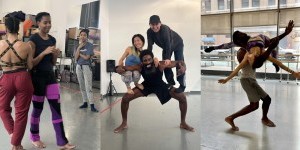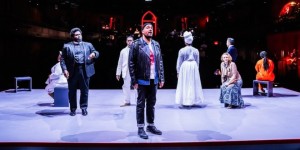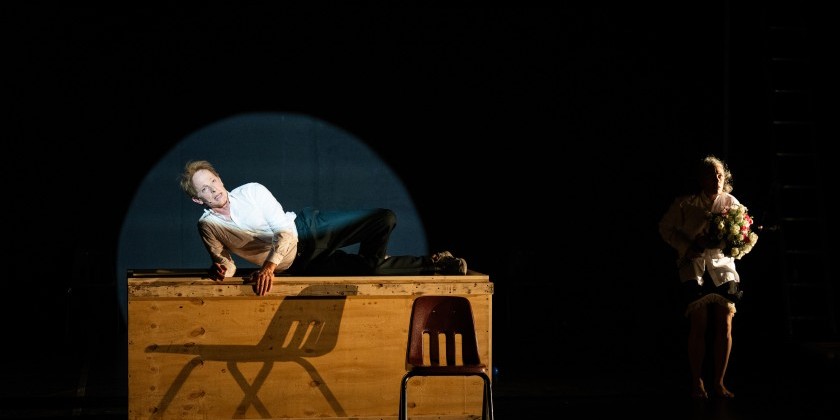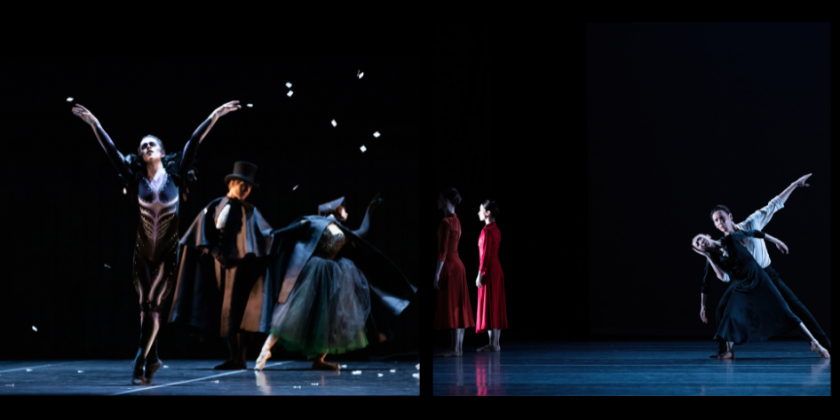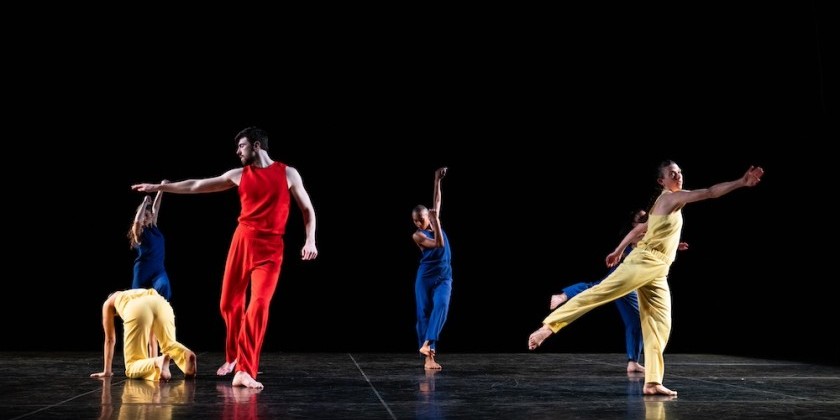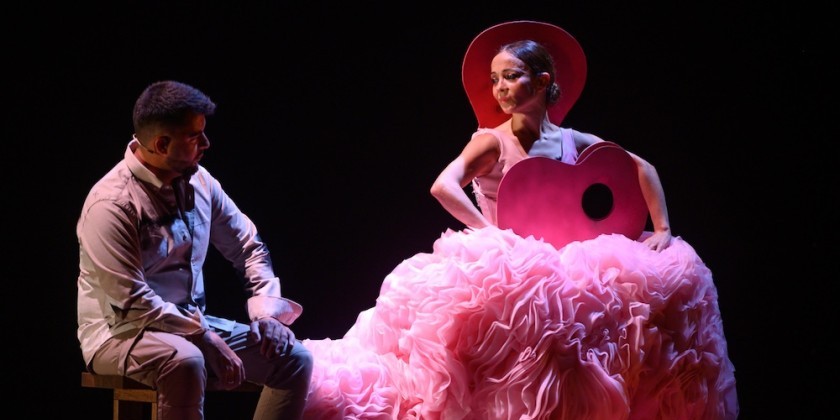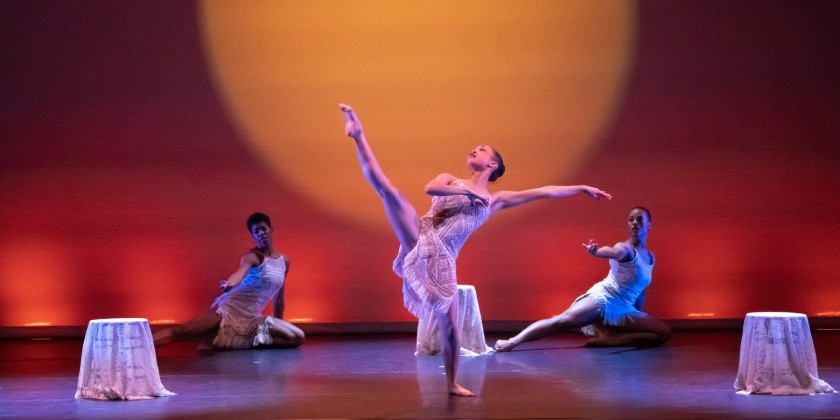IMPRESSIONS: Gregory Maqoma and Thuthuka Sibisi's "BROKEN CHORD" at BAM
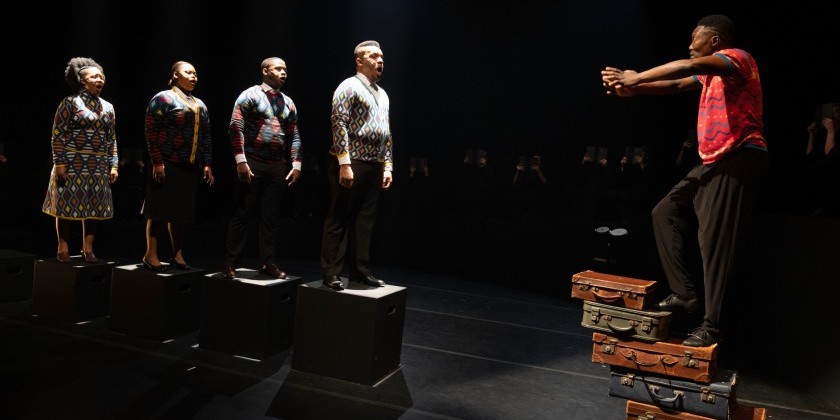
Choreographer: Gregory Maqoma
Composer and Musical Director: Thuthuka Sibisi
Dramaturg: Shanell Winlock
Technical designer: Oliver Hauser
Lighting designer: Ralf Nonn
Sound designer: Nthuthuko Mbuyazi
Costume designer: Maxhosa by Laduma Ngxokolo
Cast: Gregory Maqoma, Tshegofatso Khunwane, Luvo Rasemeni, Nokuthula Magubane, Avuya Ngcaweni
The Choir of Trinity Wall Street
Director of artistic planning: Melissa Baker
Conductor: Elena Williamson
“We cannot cancel history,” says Gregory Maqoma, near the end of Broken Chord, the elaborately staged cantata that his company from South Africa presented with The Choir of Trinity Wall Street, on October 19, at the BAM Harvey Theater. Maqoma, a choreographer and dancer, and his associate, composer and musical director Thuthuka Sibisi, have no intention of canceling history. Instead, these creative artists have selected a smoldering incident from the annals of Western imperialism, and, holding it aloft like a flaming torch, they hope to illuminate the present. It should surprise no one that the fires of resentment are still burning.
Broken Chord tells the story of an earlier tour by South African artists, the African (Native) Choir, which visited Britain and North America in 1891-93, performing to raise funds for a technical school. Evidently this tour was part of Britain’s imperialist program, yet it seems Western audiences were not sympathetic. According to the text of Broken Chord, the South African performers were met with incomprehension and racist hostility, adding to their experience of culture shock.

In contrast, the current tour by Maqoma and his group, which features a fine cast of singer-actors including Tshegofatso Khunwane, Luvo Rasemeni, Nokuthula Magubane, and Avuya Ngcaweni, received a standing ovation at BAM complete with cheers and ululations. A glance around the auditorium revealed a scene whose diversity in no way resembled the world of the 1890s. This progress has been slow in coming, however, and, in spite of it, the authors of Broken Chord do not dare to express hope.
The work’s central conflict reveals itself in the juxtaposition of the South African soloists and the members of Trinity choir, who stand-in for the British colonizers. At first, the choir appears spread out in half-light, like a distant shoreline, but when the Africans approach the choir descends from platforms to surround them, threatening and outnumbering them.
“Go home!” they chant, barking and laughing. “You are not like us!” In the final scene the two groups face-off arranging themselves in opposing wedges. Responding to the choir’s emphatic shout, “Denied! Denied! Denied!” Magubane intones, “They shall not change.” Broken Chord never extricates us from this dilemma.

In the absence of a detailed plot, the work offers fragmentary scenes built around props or other devices. At the outset, Maqoma swings a long, white tube that he later ties around himself like a harness. He stalks across the stage bent forward, with a lamp hanging from his neck, smoking and flaming. In another scene, Maqoma mounts a precarious staircase made of suitcases and leads the soloists in The Lord’s Prayer. The chorus does not notice that this performance makes the Africans stutter and retch. All the soloists gather around a table where they knead masses of dough (more problematic whiteness), loose flour spilling onto their garments.
Maqoma further enlivens the scene with his dancing, which becomes a through-line and a focus. He strikes his chest in a violent affirmation of self. He stamps, undulates, and trembles. Remarkably, the singers also dance, and while their movements are less dramatic in scale these artists are insistently physical, performing simple step routines, shooing away their persecutors, and amplifying the rhythm with body percussion. In a striking image, they lift their hands in individual spotlights, their fingers flickering as if each one carried a personal flame.

Sibisi’s music for the choir ingeniously samples Britain’s musical traditions, including folk tunes, hymns, and the national anthem, in order to characterize the Enemy. What a noble aria like Dido’s Lament has to do with “white rage,” however, escapes me; and it’s sad to see music tarred with the brush of racism. Music is not the problem. The score for Broken Chord offers an alternative to hatred, however, in the gorgeous harmonies that Sibisi gives his African soloists. Harmony, both musical and political, represents an ideal we can still aspire to.







